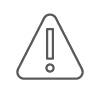Environmental Health & Safety
Lead Management Program UTK Environmental Health & Safety Program EC-041
The purpose of this document is to provide guidance for the proper management of lead on campus.
Effective Date: 01/01/2009
Revision Date: 04/01/2014
Purpose
The purpose of this document is to provide guidance for the proper management of lead on campus.
Scope and Applicability
This standard applies to worker health protection and compliance with EPA and OSHA regulations. Areas affected include all pre-1978 buildings on campus and other areas where lead is present. This shall apply to all students, staff, faculty and students and in child-occupied facilities on the Knoxville campus of the University of Tennessee. Particular emphasis shall be protection of children under the age of six years old addressed under the TSCA Lead Standard. This standard shall also apply to worker safety as defined by OSHA and management of lead waste and RRP work (renovation, repair and painting) under the Resource Conservation and Recovery Act (RCRA).
Abbreviations and Definitions
Abbreviations
EHS – Environmental Health and Safety
EPA – Environmental Protection Agency
TSCA – Toxic Substances Control Act
OSHA – Occupational Safety and Health Administration
XRF – X-Ray Fluorescence
Definitions
Lead: shall refer to elemental substances and lead-containing materials (e.g. lead chromate) Examples include, but are not limited to, lead-based paint, sheet lead, solder, lead bricks, lead shot.
Abatement: Intentional removal, replacement, or enclosure of items containing lead- based paint in order to eliminate future exposure.
Action Level: The OSHA action level for lead is 30 micrograms/cubic meter of air over an 8-hour time weighted average.
Child-occupied facility: building, constructed prior to 1978, visited by the same child, six years of age or younger, for at least two days/week, provided each day’s visit lasts at least three hours and the combined weekly visits last at least six hours. Examples include: day cares, pre-schools and kindergarten programs.
Lead-based paint: paint that contains greater than 0.5% lead by weight.
Lead-Based Paint Hazard: peeling or deteriorated lead-based paint or lead-based paint on a deteriorated surface. Also included are friction and impact surfaces.
Roles and Responsibilities
Employees who are likely to come in contact with lead, including lead-based paint shall:
- Complete necessary lead awareness training.
- Follow prescribed guidelines following EPA and OSHA regulations concerning lead.
- Report existing health or safety hazards to the supervisor.
Supervisors who have employees or children who may come in contact with lead in facilities under their control shall:
- Consult EHS when questions arise.
- Provide the Renovate Right pamphlet to occupants in pre 1978 child occupied facilities prior to any renovation, repair and painting activities that fall under EPA’s Renovation, Repair and Painting Rule (40 CFR Part 745).
- Ensure EPA RRP rules are followed when performing any renovation, repair, or painting activities in child-occupied facilities on campus.
- Ensure employees working with lead receive the necessary training and are aware of potential lead hazards they might be exposed to on the job.
In all other cases, Supervisors shall:
- Ensure that all employees who have potential to contact lead containing materials receive LeadBased Paint Awareness training periodically.
- Assure that employees under their control follow the lead-based paint work practices described in this program.
- Arrange for exposure monitoring where needed to document exposure levels or provide negative exposure assessments.
- Initiate medical surveillance for any employee who has the potential for exposure to lead as outlined in 29 CFR 1910.1025 or 29 CFR 1926.62.
- Coordinate assessment of materials to determine lead content as necessary to determine exposure potential
- Report any problem associated with implementation of the UT Lead Management Plan in the work area to EHS.
- Ensure that paint used contains less than 0.06% lead, which is considered lead-free by the CPSC.
Environmental Health and Safety shall:
- Develop and provide training upon request for lead awareness
- Develop and provide training for employees covered by the EPA Lead RRP (Renovation, Repair and Painting) Rule.
o Serve as the lead coordinator for this program.
- Conduct visual inspections of potential lead-containing material.
- Investigate complaints and concerns involving lead-containing material.
- Collect and have samples of suspect materials analyzed for lead.
- Provide consultation on lead-related issues that arise on campus.
- Assist Facilities Services with developing operation and maintenance plans related to lead as necessary.
- Have at least one individual on staff who are certified lead-paint inspectors.
- Support ancillary standards related to lead such as respiratory protection, personal protective equipment, etc.
- Revise the lead management policy as necessary.
- Identify and maintain a list of areas with known lead hazards on campus.
- Stay current with respect to regulations related to lead.
Facilities Services shall:
- Oversee contracts requiring disturbance of lead-bearing materials.
- Identify requirements for compliance with applicable Federal and State lead regulations in contract specifications;
- Coordinate material assessment and provide lead-based paint inventory information to EHS for projects administered.
- Interface with contractors where enforcement of related contract provisions is required.
- Maintain submittal documents and related records from abatement contracts in a manner that is readily retrievable in case of a regulatory inspection.
- Ensure lead waste is managed according to all applicable regulations of the UT Lead Management Plan.
- Assure that employees under their control follow the lead-based paint work practices described in this program.
- Assure that contractors performing abatement work holds current EPA lead abatement certifications and outside contractors performing renovation work on child care facilities built before 1978 on campus have RRP firm certifications and a Certified Renovator is overseeing those duties.
Outside Contractors shall:
- Determine if lead-based paint is present and take appropriate precautions to protect all persons on campus when disturbing lead based paint surfaces.
- Ensure contractors have current EPA certifications in lead abatement (Lead Abatement Supervisor, Lead Abatement Worker, etc…) when performing abatement work on campus.
- Have written lead compliance program which describes the activities that may generate lead dust and fumes and what preventative measures will be taken during such activities to control exposure to their workers and University employees (29CFR1926.62);
- Be responsible for providing medical surveillance, training and personal protective equipment for their own employees
- Ensure that outside contractors who disturb lead based paint have EPA lead based paint certifications for individual workers as well as the firm.
Plans/Programs
Routine Inspections and Findings:
- EHS will inspect buildings on campus annually and look for materials or processes that could potentially contain lead and lead-based paint that may be in poor condition.
- EHS will inspect any child-occupied facilities on campus every six months that contain leadbased paint to determine if the paint is in poor condition and ensure any issues are corrected.
- Other groups on campus that conduct inspection and encounter materials that may contain lead should contact EHS for proper management Complaints:
- EHS shall investigate complaints involving lead.
- Sampling may be necessary to determine the presence of lead and if any hazards exist.
- Results of the findings and any recommendations shall be communicated to the complainant.
- Record shall be kept of the complaint, including final disposition.
Routine Work with Lead:
- Employees and faculty who will be working with lead or lead containing items should consult EHS for appropriate controls (ventilation, decontamination, personal protective equipment, etc).
- EHS must ensure that, if any employees are generating lead dust or fumes, the fumes do not exceed the levels of lead exposure specified in the OSHA Action Levels. Fumes above these levels require air monitoring.
Lead Abatement Projects:
- When lead paint must be abated in target housing or child-occupied facilities (as defined by
TSCA it must be performed by lead workers and supervisors certified by the State of Tennessee.
Renovation Projects:
- Project planners are encouraged to contact EHS during the planning stages of renovation projects to determine the presence of lead and appropriate controls. EHS shall be a consulted for proper disposal of lead and lead-containing materials.
Disposal of Lead:
- Individuals wishing to dispose of lead or lead-containing debris should contact EHS regarding proper management.
Worker Protection:
Personal Hygiene Practices
Even when airborne lead exposure levels are low, the potential exists for significant lead ingestion due to poor personal hygiene practices. No eating, drinking, application of cosmetics (including lip balm) or smoking is permitted at work sites where lead and lead-based paints are being disturbed. Workers shall wash their hands, arms and faces prior to eating, drinking, applying cosmetics or smoking.
When chemical strippers are used to remove lead-based paint, appropriate impermeable gloves and chemical resistant clothing shall be worn for worker protection as well as safety goggles or face shields to protect the eyes from chemical splashes. Portable eye wash equipment must be available on site, if applicable. The area where the chemical stripper is being used must be well ventilated to avoid exposure to potentially toxic vapors.
Engineering Controls
When any person is performing an activity that may generate lead dust or fumes (i.e., demolishing, scraping, sanding, abrasive blasting, welding, cutting, torch burning, etc. on surfaces coated with leadbased paint), engineering controls shall be used. Engineering controls include, but is not limited to, work area separation with plastic sheeting, placing the work area under negative air pressure, misting the air to minimize dust levels, etc.). All means necessary to keep exposure below the permissible exposure level shall be followed.
Respiratory Protection
Workers engaged in lead work will require respiratory protective equipment when industrial hygiene air monitoring indicates anticipated exposures in excess of the PEL.
The use of respiratory protection shall be in accordance with OSHA 29 CFR 1910.134, Respiratory Protection, and UT’s Respiratory Protection Program. All workers must be medically evaluated to determine the ability of the individual to perform the work while wearing a respirator. Training in the care, use and fitting of the respirator in addition to fit-testing is conducted by EHS for those employees who are authorized to wear a respirator. Any worker who is not authorized to wear a respirator will be prohibited from engaging in activities which may expose the worker to airborne lead if exposures are anticipated to exceed the OSHA permissible exposure level.
All employee respirators worn at the work site must be placed in a plastic bag prior to leaving the site and thoroughly cleaned before being worn again. Cleaning should include inspection of the respirator and replacement of worn parts. Fit-checks should be done each time the respirator is worn. The medical exam, fit-test and training must be repeated annually for those exposed above the PEL.
Respirators shall be selected as follows:
Airborne concentration of lead | Required respirator1 |
Not in excess of 50 μg/m3 | Half-mask air-purifying respirator equipped with high efficiency filter2, 3.
|
Not in excess of 250 μg/m3 | Full face piece, air-purifying respirator with high efficiency filters3.
|
Not in excess of 500 μg/m3 |
|
Not in excess of 1000 μg/m3 | Supplied-air respirators with full face piece, hood, helmet, or suit, operated in positive pressure mode.
|
Greater than 1000 μg/m3, unknown concentration or fire fighting | Full face piece, self-contained breathing apparatus operated in positive-pressure mode. |
- Respirators specified for higher concentrations can be used at lower concentrations of lead.
- Full face piece is required if the lead aerosols cause eye or skin irritation at the use concentrations.
- A high efficiency particulate filter means 99.97 percent efficient against 0.3 micron size particles.
Disturbance of lead paint surfaces within a building’s interior should only occur under proper work controls. Methods of controlling lead exposure to other occupants may include isolating the area by use of plastic sheeting and sealing all ventilation ducts in the area of the work and/or turning off and securing the ventilation system (lockout-tag out). Other methods to minimize distribution of lead dust may include wet sanding and the use of HEPA vacuum cleaners.
Occupational Exposure to Lead – Exposure Assessment:
If there are any employees who perform work that may generate lead dust or fumes, an initial assessment will be made to determine if employees will be exposed to lead at or above the Action Level or PEL and to determine the number of days per year the worker will be involved in this activity.
OSHA personal air monitoring will be conducted on employees performing activities that may generate lead dust or fumes. Employees will be notified of the results of the monitoring. Should the Action Level or PEL be exceeded, medical surveillance and training will be triggered (see Section 5.4).
Medical Surveillance:
In the unlikely event that an employee is exposed above the OSHA Action Level or PEL for 30 or more days per year, UT will:
- conduct a medical examination of the employee annually;
- perform a blood test to determine the level of lead in blood; if blood lead levels are equal to or greater than 40 micrograms of lead per deciliter of blood, an annual medical exam will be provided; and
- Remove employee from the activity that created the elevated blood level if levels stay above 40 µg/mL.
Exposure Monitoring:
Exposure monitoring should be conducted for maintenance activities involving the disturbance of leadbased paint, unless the same type of job has been assessed previously. In this case, a review of the previous assessment can be used to decide if additional monitoring is necessary.
Notification to Building Occupants
Prior to the initiation of any large scale interior or exterior work involving lead-based paint, Facilities Planning or Facilities Services will forward lead-based paint information to the appropriate department chair or director. This bulletin will contain the general scope of work to be done, dates for the start and proposed completion of the work, and the precautions which will be employed to protect building occupants. This bulletin will also alert staff to the increased hazard that lead contamination may present for pregnant or nursing women. Based on a determination by the Project Manager in consultation with EHS, further measures to reduce potential lead exposure will be taken if necessary.
Signage
Warning signs shall be posted at each job site where the employees exposure to lead is above the PEL. Where an exposure assessment has not been completed, signs shall be posted until the results are known. The signs shall consist of the following wording:
WARNING HAZARD
LEAD WORK AREA
NO SMOKING, EATING, OR DRINKING
Recordkeeping
The following records shall be kept as part of this program
- Training for lead awareness (keep on IRIS, or in dept.)
- Training for lead remodeling, repair and painting program (kept by EHS)
- Lead-paint inspector training and certification (kept by EHS)
- Lead-paint risk assessor training and certification (kept by EHS)
- Sampling results, including bulk sampling, air sampling and any biological monitoring (kept by EHS)
- Inspection and testing results (kept by EHS)
- Complaint results (kept by EHS)
- Material Safety Data Sheets, or Safety Data Sheets (kept by EHS)
- Medical evaluation for lead exposure (kept by Employee Health)
Records falling under a, b, c, e and f of this section shall be kept for at least three years. Records from d, g, h and i above shall be kept indefinitely.
Training and Information
Awareness
General awareness training shall be provided to all employees who are likely to disturb lead or work with lead-containing materials. Training may be provided by EHS, or by Facilities Services, on-line selfstudy, or other means and may be incorporated as part of the OSHA Hazard Communication program, OSHA Chemical Hygiene Plan or the OSHA Lead Standard (29 CFR 1910.1025). Awareness training shall be available via self-study, online (EHS website, UT on-line or Skillsoft) or upon request.
Employees shall be trained of the following information:
- Health hazards associated with lead exposure;
- Lead routes of entry;
- Locations of lead materials and lead-based paint on campus;
- Approved methods of working with lead-based paint; and
- Methods of self-protection
Inspectors and Risk Assessor
EHS shall have at least one employees who is trained as lead- paint inspectors and at least one employee who is a lead-paint risk assessor.
Lead Remodeling, Repair and Painting Program (RRP)
EHS shall provide training to UT employees who may conduct remodeling, repair and painting in childoccupied facilities and target housing.
Contractors
Contractors performing renovation, maintenance, repair, and similar activities shall have proof of certification under the EPA RRP program and from the State of Tennessee for all workers and supervisors who do lead abatement, and renovation, repair and painting on campus. In addition, contractors whose workers are exposed to lead must present a copy of their Lead Compliance Plan, as required by RCRA, and must maintain good work practice controls to minimize lead exposure to their workers. Contractors are required to provide their workers with the proper PPE, respirators, air monitoring, medical surveillance and any other requirements as defined by OSHA.
References
OSHA General Industry Standard 29 CFR 1910.1025 (Lead Standard)
OSHA General Industry Standard 29 CFR 1910.1200 (Hazard Communication)
OSHA General Industry Standard 29 CFR 1910.1450 (Chemical Hygiene Plan)
OSHA Construction Standard 29 CFR 1926.62
OSHA Hazardous Communication Standard 29 CFR 1926.59
OSHA Respiratory Protection Standard 29 CFR 1926.62
40 CFR, 763.6, Section 6 (TSCA)
40 CFR, 763.80-99 (TSCA)
40 CFR 763.120-126 (TSCA)
40 CFR 260-266, 268 (RCRA)
40 CFR 745 (EPA RRP Rule)
Disclaimer
The information provided in these guidelines is designed for educational use only and is not a substitute for specific training or experience.
The University of Tennessee Knoxville and the authors of these guidelines assume no liability for any individual’s use of or reliance upon any material contained or referenced herein. The material contained in these guidelines may not be the most current.
This material may be freely distributed for nonprofit educational use. However, if included in publications, written or electronic, attributions must be made to the author. Commercial use of this material is prohibited without express written permission from the author.
Appendices
EC-041 Lead Management Plan (downloadable pdf)






